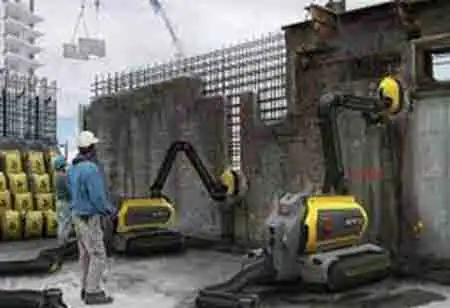Thank you for Subscribing to Construction Business Review Weekly Brief
Specials
- Apartment and Condominium Contractors Canada
- Decking Canada
- Architectural Glass Europe
- MEP APAC
- Construction Saudi Arabia
- German Apartment and Condominium Contractors
- Construction Law APAC
- Outdoor Construction
- Foundation Construction Canada
- MEP Canada
- Kitchen and Bath
- Cold Storage Construction APAC
- Precast Concrete Europe
- Construction Staffing Europe
- Pre-Construction Services
- Flooring System APAC
- Scaffolding Canada
- Swimming Pool Construction Canada
- Construction Management Canada
- Cold Storage Construction Canada
- Flooring Systems Europe
- Residential Construction
- Concrete Canada
- Construction Cladding Europe
- Construction Cladding APAC
- Concretes, Aggregates and Construction Materials APAC
- Concretes, Aggregates and Construction Materials Europe
- Commercial Contractors Europe
- Commercial Contractors APAC
- Dummy
- Construction Insulation, Coating and Waterproofing
- Construction Management APAC
- Landscaping Canada
- Construction Coating Europe
- Construction Tech Startups Europe
- Insulation Services Europe
- Mechanical Contractor Canada
- Mould Remediation and Testing Europe
- Swimming Pool Construction APAC
- Building Sealing Solutions Europe
- Construction Engineering Services
- Mechanical Electrical and Plumbing
- Roofing Systems Europe
- Architectural Glass APAC
- Startups APAC
- Construction Forensic and Owners Representative
- Flooring System
- Waterproofing APAC
- Wall Systems
- Safety and Compliance Europe
- Construction Bidding and Auctions
- Modular and Prefab Construction
- Architectural Glass
- Construction MENA
- Construction Demolition and Recycling Europe
- Modular Construction Europe
- Construction Interiors
- Steel Building APAC
- HVAC
- Doors and windows
- Construction Latam
- Building Information Modeling APAC
- Sustainable Construction APAC
- Building Restoration and Maintenance
- Commercial Contractors
- Specialty Construction
- Construction Engineering Canada
- Construction Engineering MENA
- Modular Construction Canada
- Modular Construction APAC
- Roofing and Siding Systems
- Workforce Management and Staffing
- Roofing Systems APAC
- Construction Consulting
- Steel Building Europe
- Construction Demolition and Recycling APAC
- Safety and Compliance APAC
- Concretes, Aggregates and Construction Materials
- Construction Cladding
How Robotization is Changing BIM Workflow?
Building Information Modeling (BIM), a methodology in which digital, 3D building designs and construction plans are used to direct and track construction processes.

By
Construction Business Review | Monday, July 12, 2021
Stay ahead of the industry with exclusive feature stories on the top companies, expert insights and the latest news delivered straight to your inbox. Subscribe today.
Robots are equipped for field and object inspection. They use sensors and other technologies to identify problems and help keep the building information model up to date.
Fremont, CA : Building Information Modeling (BIM), a methodology in which digital, 3D building designs and construction plans are used to direct and track construction processes, has had a significant effect on the architecture, engineering, and construction (AEC) industries, saving both time and money to professionals in these sectors. In addition to facilitating transparent visualization, BIM has contributed enormously to collaboration between various industries, often providing reliable, up-to-date information on the project.
Another exciting sector that will transform the face of the AEC industry is robotics. Surprisingly, robotics and BIM can be mutually beneficial. Robots can manage mundane or hazardous activities, enhancing safety and increasing efficiency at the construction site. The Building Information Model could be used as a kind of map for on-site robots.
Advantages of Using Robots in AEC
BIM Workflow and Robotics There are several ways robotization can change the building workflow. Obviously, robots will make certain human workers redundant. However, the advantages are much greater and may also involve the introduction of new career opportunities.
For instance, just like BIM itself, robots might help make certain construction processes more efficient and cost-effective. BIM helps AEC companies save time and resources by alleviating the risks of miscommunication and costly setbacks.
Here are some ways in which robotization can help accelerate and improve the BIM workflow:





